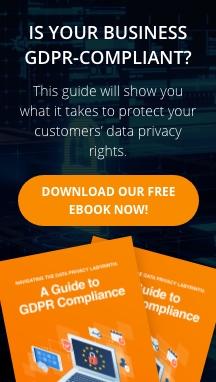The new year is a great time to start fresh and implement new strategies for your business. If you haven’t already, we highly suggest adding managed detection and response (MDR) to your cybersecurity strategy.
What is managed detection and response?
MDR is an outsourced service for hunting down and responding to cyberthreats. It combines human expertise and technology to keep your data and IT systems protected, even if a cyberthreat manages to evade common organizational security measures.
With MDR, you gain access to a security operations center (SOC), which is a team of cybersecurity experts with various roles and responsibilities, which may include:
- Security analyst – They conduct 24/7 network and endpoint monitoring, assess if unusual activity is a real threat or a false positive, report on and prioritize detected cyberthreats, and implement the necessary changes to improve the client's security posture.
- Security engineer – They're responsible for maintaining and updating hardware and software security tools and systems as well as the corresponding documentation.
- SOC manager – They hire, train, and oversee security analysts and engineers. They also direct and orchestrate their client's cybersecurity strategy and response to major security incidents.
- Incident response – Manage ongoing security incidents and guiding the client in the event of a data breach.
The SOC uses an endpoint detection and response (EDR) tool, which continuously monitors, collects, and analyzes real-time endpoint data, and automatically responds to identified suspicious behavior based on a predetermined set of rules. The EDR tool provides the SOC visibility into security events at the endpoint level (e.g., laptops, PCs, and mobile devices), enabling them to triage alerts and determine the appropriate response to minimize the impact of cyberthreats.
Free eBook: 3 Essential types of cybersecurity solutions your business must have
With the combination of human and technology capabilities in MDR, threats are effectively eliminated and affected endpoints are restored to their pre-infected state.
Why should businesses use MDR?
There are many reasons why businesses should leverage MDR:
Prioritize security alerts
The number of endpoints — from mobile devices of remote workers, Internet of Things devices, and connected third-party networks — keep growing, so security solutions like an EDR tool usually generate a massive volume of alerts every day. So while an EDR tool is powerful, you still need human expertise to sift through all the alerts and assess which detected cyberthreat to address first.
Address IT security staffing issues
The United States and the rest of the world have been grappling with the cybersecurity talent shortage problem for over a decade. The global cybersecurity workforce gap even rose by 26.2% in 2022 compared to 2021. This growing issue makes it almost impossible for small- and medium-sized businesses (SMBs) to hire in-house IT security staff since SMBs cannot compete with the more enticing job offers made by larger enterprises.
But by using MDR, you gain access to a fully staffed SOC with the skills, experience, and know-how needed to identify and respond to cyberthreats before these can cause any damage.
Enjoy cost savings
Outsourcing your security operations to an MDR provider means you don’t have to invest in additional hardware or software or hire dedicated staff for monitoring and incident response.
Ensure regulatory compliance
The SOC team will ensure that your organization follows all applicable laws and regulations related to cybersecurity, which makes it easier for you to comply with various standards.
Interested in MDR? You can turn to Fidelis for all of your cybersecurity needs. By partnering with us, you can focus on your core business knowing that our IT security experts have your back. Schedule a call with us.


